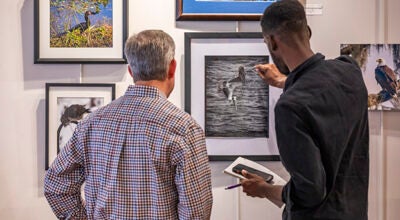Armistead House to feature black history
Published 1:00 am Friday, April 8, 2011
The Armistead House in Plymouth has been donated by an Alabama family for use as an African-American history and culture museum.
The family of James and Velma Braye, who owned the house, donated it so it could be renovated for use as a museum. The Brayes live in Tuskegee, home of Tuskegee Institute.
The Town of Plymouth will select the nonprofit group that gets ownership of the house.
Willie Drye, chairman of the Plymouth Small Town Main Street Committee, said the house, which dates back to the earliest days of Plymouth’s history, will depict early African-American history and culture once it assumes its new role of a museum. The house is listed in the National Register of Historic Places as the Picot-Armistead-Pettiford House.
Drye said the donation was arranged by the committee, and there will be some assistance provided by Carl Westmoreland, a historian with the National Underground Railroad Freedom Center in Cincinnati.
The Brayes decided to donate the house after a private meeting in Plymouth last week, Drye said.
“Earlier that day, 9-year-old Salena Bulls (Velma Braye’s granddaughter) said she thought it would be great if the house was used as a museum,” Drye said.
“Like Salena, I think it’s a wonderful thing that the house will be utilized as an African-American history museum,” Velma Braye said. “It’s something I’ve been wanting since 2000.”
Braye grew up in the Armistead house before moving to Alabama. Her mother, Gladys Whitley, who died in 2000, was the house’s last occupant.
“The house is a capsule of history whose historic stature is enhanced by its unusual succession of owners,” Westmoreland said. “Each owner made a significant contribution to Plymouth and to the whole notion of American striving and attainment.”
The house was built in 1814 by a Frenchman, physician Julian Picot, who is thought to have gone to Plymouth in the 1780s after being shipwrecked on Ocracoke Island, Drye said.
“He arrived at Plymouth around 1787,” he said. “He bought a lot at the corner of West Main and Monroe streets, where he built the house. However, the title to the house and lot were transferred to Plymouth merchant Robert Armistead in 1844.”
Westmoreland said Armistead died in 1857, but his brother, Thomas, lived in the house until after the Civil War.
Plymouth saw heavy fighting during the war, and the Armistead house was one of only a handful of buildings not heavily damaged or destroyed before the war ended in 1865.
“Local oral history has long linked the house to the Underground Railroad that helped escaped slaves in the Antebellum South find their way to freedom,” Drye said. “But some historians challenge that theory because the 1850 U.S. census indicates that both Armistead brothers owned slaves.”
He said the house was sold at a public auction in 1886 to William H. Hampton and stayed in that family until 1913, when it was bought by Jane Brinkley. Later, Brinkley,
a white woman, sold the house to Reuben Pettiford, an African-American brick mason, in 1914 č an unusual transaction in 1914.
“The fact that the house has stayed in the hands of an African-American family for nearly a century and was used as a boarding house and hotel for blacks during the so-called Jim Crow era of segregation is also historically significant,” he said.
“We are delighted that the Braye family has decided to make this huge contribution to our effort to improve downtown Plymouth,” Drye said. “The Picot-Armistead-Pettiford House is one of North Carolina’s most historic buildings, and the restoration of this great old house as a museum of African-American history and culture will be a milestone for our downtown commercial district.
“This will be a wonderful addition to our collection of museums focusing on Plymouth’s rich maritime, Civil War and natural histories.”
Drye said his committee will immediately launch a fundraising effort to put a new roof on the house and stabilize it. Advisers with the N.C. Department of Cultural Resources will help plan the roofing project.





